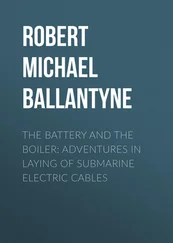Michael Neufeld - The Rocket and the Reich
Здесь есть возможность читать онлайн «Michael Neufeld - The Rocket and the Reich» весь текст электронной книги совершенно бесплатно (целиком полную версию без сокращений). В некоторых случаях можно слушать аудио, скачать через торрент в формате fb2 и присутствует краткое содержание. Город: Washington, Год выпуска: 2013, ISBN: 2013, Издательство: Smithsonian Books, Жанр: История, military_weapon, на английском языке. Описание произведения, (предисловие) а так же отзывы посетителей доступны на портале библиотеки ЛибКат.
- Название:The Rocket and the Reich
- Автор:
- Издательство:Smithsonian Books
- Жанр:
- Год:2013
- Город:Washington
- ISBN:978-1-58834-466-3
- Рейтинг книги:3 / 5. Голосов: 1
-
Избранное:Добавить в избранное
- Отзывы:
-
Ваша оценка:
- 60
- 1
- 2
- 3
- 4
- 5
The Rocket and the Reich: краткое содержание, описание и аннотация
Предлагаем к чтению аннотацию, описание, краткое содержание или предисловие (зависит от того, что написал сам автор книги «The Rocket and the Reich»). Если вы не нашли необходимую информацию о книге — напишите в комментариях, мы постараемся отыскать её.
The Rocket and the Reich — читать онлайн бесплатно полную книгу (весь текст) целиком
Ниже представлен текст книги, разбитый по страницам. Система сохранения места последней прочитанной страницы, позволяет с удобством читать онлайн бесплатно книгу «The Rocket and the Reich», без необходимости каждый раз заново искать на чём Вы остановились. Поставьте закладку, и сможете в любой момент перейти на страницу, на которой закончили чтение.
Интервал:
Закладка:
My debts to archives and libraries are considerable. I would like to thank Robert Wolfe, Harry Riley, Ed Reese, and other members of the National Archives staff; David Marwell and Frau Wolf of the Berlin Document Center; Philip Reed of the Imperial War Museum; James Hagler of the Space and Rocket Center; Rudolf Heinrich, former archivist of the Deutsches Museum; and Helmut Trischler, its current research director. I would also like to express my gratitude to the staffs of the Bundesarchiv Koblenz, the Bundesarchiv/Militärarchiv Freiburg, the Humboldt University Archive, the Redstone Scientific Information Center, the Kz-Gedenkstätte Mittelbau-Dora and the Peenemünder Informationszentrum. The Journal of Military History kindly allowed me to reprint material that first appeared in a different form in that publication.
For the kind granting of their time and permission to conduct oral history interviews, I would like to thank the former Peenemünders whom I visited in Huntsville and elsewhere, especially Gerhard Reisig, who was very helpful at an early stage of this project. I know that some of the things I have said in this book will anger them, but I have always tried to be faithful to the truth as I saw it. I do not think that there is such a thing as collective guilt; each case must be evaluated individually. The German rocket engineers were neither uniformly innocent nor uniformly guilty of Nazi enthusiasm or the abuse of slave labor. It is time that they stop being lumped together. I understand that the majority were merely doing their job in wartime in a totalitarian society over which they had no control, but neither is that a reason to exempt every last one from responsibility. On those questions, I am grateful to Eli Rosenbaum of the Office of Special Investigations, U.S. Justice Department, and to a freelance journalist, Linda Hunt, for supplying me with valuable information. Other interviews were kindly granted by Dr. Hermann Kurzweg, Rolf Engel, Dr. and Mrs. Hans Geipel, Mr. and Mrs. Manfred Schubert, and Mr. and Mrs. Gerhard Zanssen.
Finally, Karen Levenback gave me much love and support during the writing of this book, as well as the benefit of her professional expertise in editing and writing. Nearly every chapter is better written because of her insightful advice. Her encouragement during the long hours at the computer have been invaluable as well. I would also like to thank our cats, Newt, Birch, and Kepler, for the suggestions they made by jumping on my keyboard. It would not have been the same without them.
Prologue
Summer 1943
In early August 1943 Dieter Huzel, a newcomer to the secret German Army rocket center at Peenemünde, at last got his chance to see the A-4 missile. As a friend showed him into the launch checkout building for the vehicle that would later become famous as “Vengeance Weapon 2” or V-2, his eyes slowly adjusted from the glare of the summer sun. Finally,
I saw them—four, fantastic shapes but a few feet away, strange and towering above us in the subdued light. I could only think that they must be out of some science fiction film— Frau im Mond [The Woman in the Moon] brought to earth.
I just stood and stared, my mouth hanging open for an exclamation that never emerged. Then, slowly, I walked around them. They fitted the classic concept of the space ship—smooth, torpedo-shaped—giving no hint of the mechanisms within, and resting tip-toe on the points of four swept cruciform fins. By today’s standards the A-4 was a small missile, but these were 46 feet tall and by all odds bigger than anything I had ever dreamed of. They were painted a dull olive green, and this, said Hartmut, as well as their shape, had won them the nickname of cucumber. I laughed, and the spell was broken. 1
It was indeed a remarkable sight. Despite the A-4’s Utopian origins in the spaceflight movement of the 1920s, the German Army had committed massive resources to build this exotic weapon, and had succeeded. But the missile was only the most spectacular product of this investment. What the money had purchased, first and foremost, was the Peenemünde Army Center, which had created this astonishing technological achievement.
Huzel had arrived just as the institution was reaching the apogee of its trajectory. Up to 12,000 people worked—or were forced to work—for the Army on the Baltic island of Usedom, where Peenemünde was located. Since his arrival, Huzel had passed through the new “works train” station, where the hordes of commuters reminded his friend “of the Berlin U and S stations at rush hour.” From the the modern electric train that coursed through the center, Huzel had viewed massive facilities, including a camp of mostly Russian and Polish forced laborers and the F-1 assembly building at the Pilot Production Plant (Peenemünde-South). That building, more than 250 meters (800 feet) long, held an assembly line that would produce three hundred A-4s a month in the fall. Unbeknownst to him, F-1 also contained a small concentration camp, where six hundred mostly Russian and French-speaking prisoners were held under SS guard as the first installment of the labor force. 2
The newcomer’s journeys also took him to the older Development Works at Peenemünde-North (or -East, the original name used to distinguish it from the much smaller Luftwaffe facility at Peenemünde-West). At the Development Works Huzel found, scattered among the trees, a large campus of administrative buildings, laboratories, test stands, and workshops. About six thousand engineers and skilled hands worked in this facility alone as a result of concentrating “everything under one roof” instead of contracting out most work to companies. Here the first A-4s had been designed and built since the center opened in 1937. 3
How had this remarkable institution come about? Why had the Third Reich invested hundreds of millions of marks in guided missile research and development? And why had the leaders of the Army rocket program incorporated into their project, willingly or unwillingly, one of the worst features of the Nazi regime for which they worked—concentration camp labor? To answer those questions, we must first turn to the late 1920s and early 1930s. During that period key officers in artillery development came to believe that liquid-fuel rocketry could be the basis for a potentially war-winning secret weapon: the ballistic missile. Supersonic projectiles like the A-4 would rain down on potential enemies, causing physical destruction and psychological shock. If the surprise was great enough, opposing leaders might well concede victory to the technologically superior German forces. But the Army’s interest in the technology had been awakened by quite another scenario, one popularized by a small but determined band of spaceflight enthusiasts. To those true believers, the liquid-fuel rocket would be the means for liberating the human race from the bonds of the earth.
Chapter 1
The Birth of the Missile
Berlin, October 1929. In the fashionable west end, near the Kurfürstendamm, the entire façade of the UFA Palace movie theater was “covered with a gigantic animated panel, showing the earth and the moon against a starry sky and a projectile-like moon rocket making round trips between them.” 1Playing in the theater was the new science fiction movie Frau in Mond (The Woman in the Moon) , by Fritz Lang, the renowned director of Metropolis . The newspapers carried notices of the impending launch of a stratospheric rocket by Hermann Oberth, the film’s scientific adviser and the father of the Weimar spaceflight movement. That movement had arisen in response to Oberth’s writings about the feasibility of space travel, but it was also an expression of the Weimar Republic’s forward-looking and innovative culture. The upheavals of 1918—the loss of World War I, the abdication of the Kaiser, and the founding of a democratic republic—had created unprecedented freedom but had also exacerbated deep social and political tensions in German society. Those conditions fostered original art and original thinking.
Читать дальшеИнтервал:
Закладка:
Похожие книги на «The Rocket and the Reich»
Представляем Вашему вниманию похожие книги на «The Rocket and the Reich» списком для выбора. Мы отобрали схожую по названию и смыслу литературу в надежде предоставить читателям больше вариантов отыскать новые, интересные, ещё непрочитанные произведения.
Обсуждение, отзывы о книге «The Rocket and the Reich» и просто собственные мнения читателей. Оставьте ваши комментарии, напишите, что Вы думаете о произведении, его смысле или главных героях. Укажите что конкретно понравилось, а что нет, и почему Вы так считаете.












